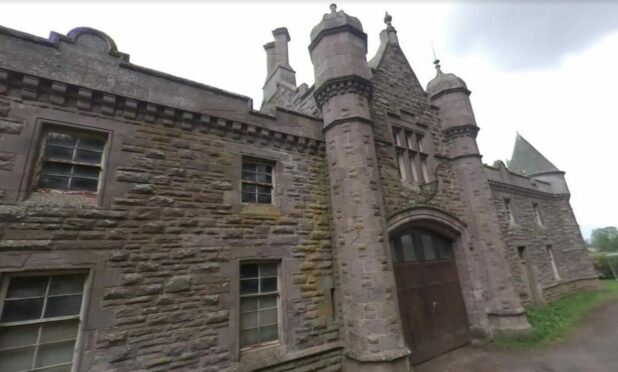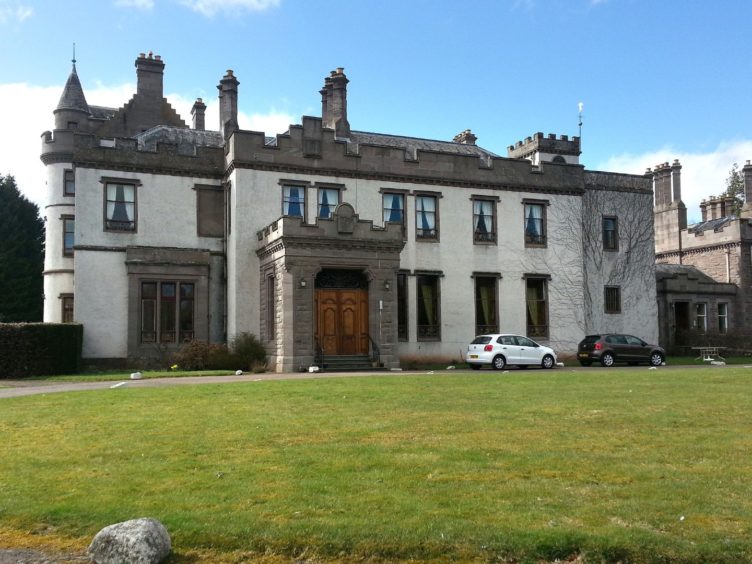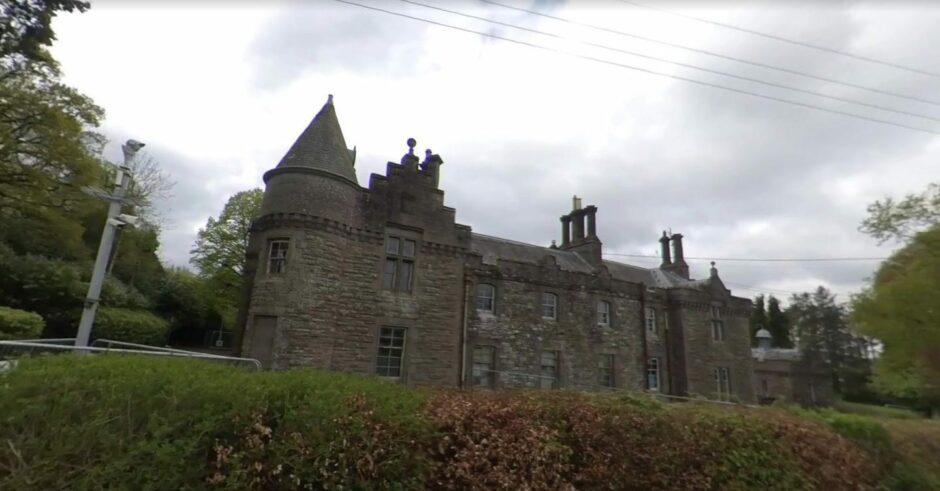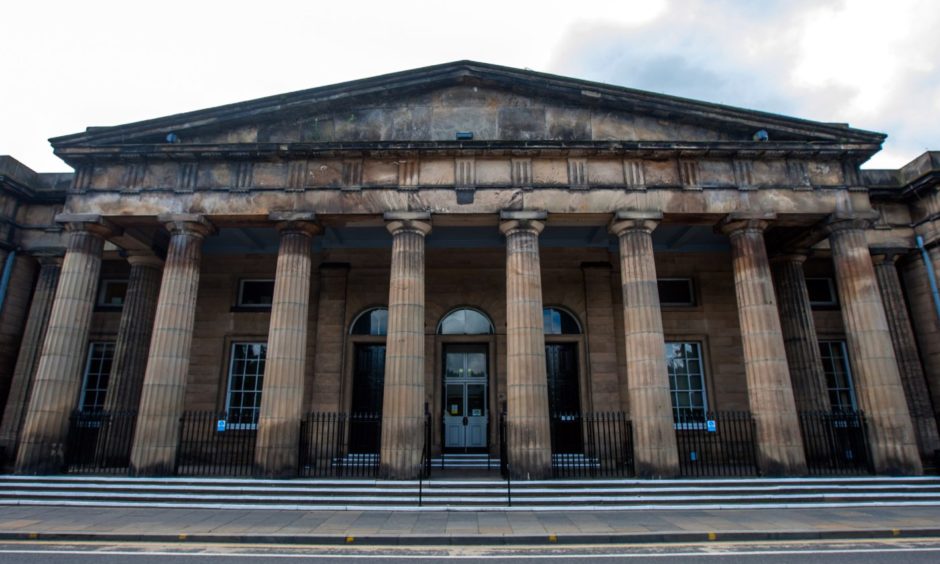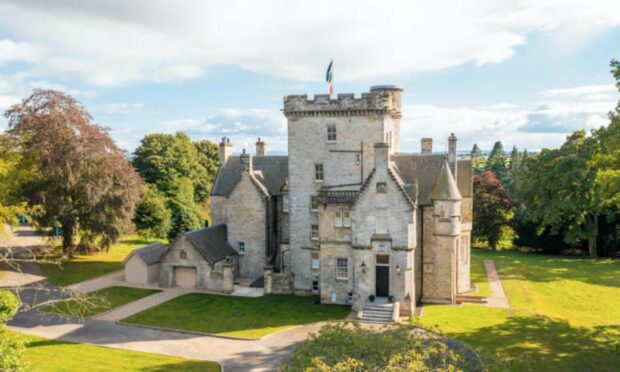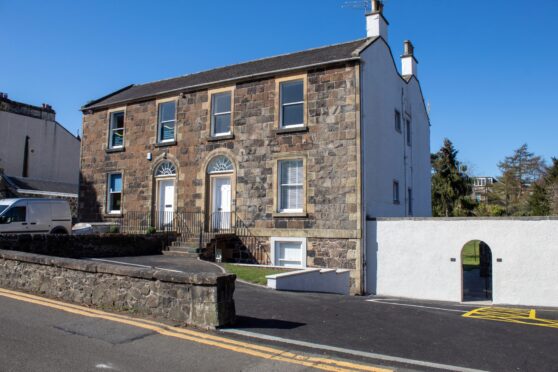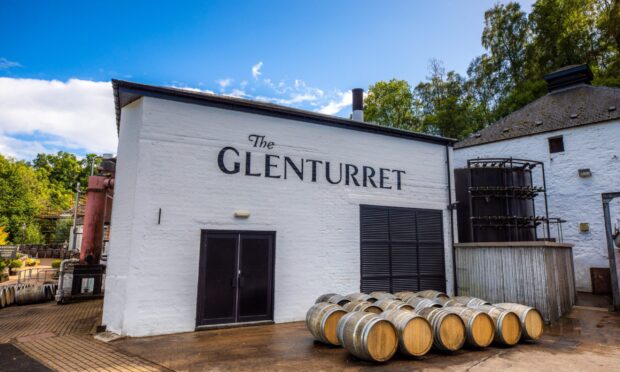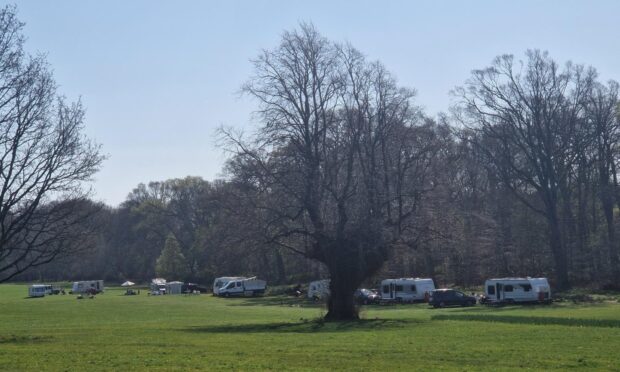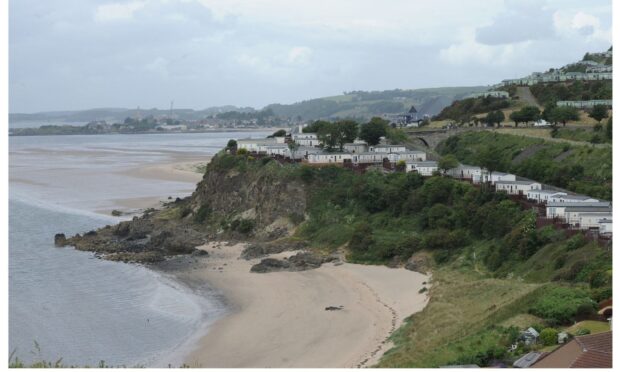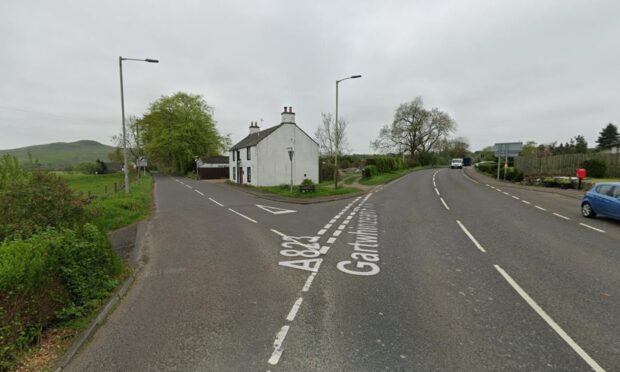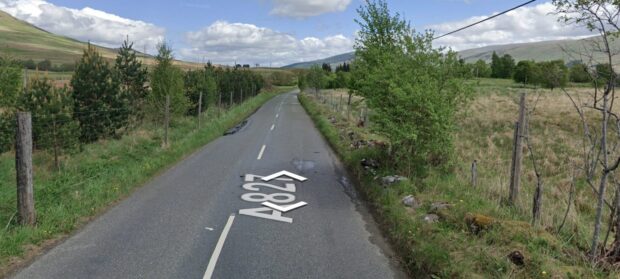An Aberdeen man has gone on trial accused of stripping more than £70,000 worth of lead from buildings at a historic castle estate in rural Perthshire.
Rolands Zeiliss denies he was part of a masked gang who targeted properties in the grounds of Belmont Castle, the one-time home of a British Prime Minister.
Perth Sheriff Court heard that a cottage on the edge of the remote Meigle estate was flooded after tonnes of lead was removed from its roof.
A nearby stables building was raided weeks later, and again in early 2020.
Investigators found broken CCTV cameras dumped in a bush.
Painter and decorator Zeiliss later told police he couldn’t explain why his DNA was found on one of the units.
He insisted he had never been at the estate.
The allegations
It is alleged that Zeiliss stole around £12,000 worth of lead from the roof of Gardener’s Cottage on October 31, 2019.
The 37-year-old is accused of destroying outside security lighting and CCTV cameras at the site in an attempt to defeat the ends of justice.
He is further accused of returning to the estate on November 25 and stealing around £37,000 worth of lead from The Stables administration building.
It is alleged that he moved the position of CCTV cameras there to avoid detection.
Prosecutors also claim Zeiliss, of Cattofield Terrace, went back to the old stables building on January 7, 2020, and stole £21,000 of lead.
He faces another charge of attempting to defeat the ends of justice by removing CCTV cameras from the site.
Zeiliss denies all charges.
Owner on holiday
Jurors heard that Alan Paterson, the owner of Gardener’s Cottage, went away on holiday at the end of October 2019.
His cleaner attended at around 8.30pm on October 31, and noticed a CCTV camera “dangling” off the side of the property.
Another workman went to the cottage the following afternoon to turn off water for Mr Paterson.
He noticed that lead had been stripped off the building, leaving bare wood slats visible on the roof.
Police Constable Gary Polson told the court he went to the cottage and met Mr Paterson on November 8, after he had returned home from his holiday.
PC Polson described the loss of lead as “very significant”.
“The reason the lead is there is to prevent water ingress,” he said.
“The weather was bad at that time and the whole property was flooded.”
PC Polson said the building had been recently refurbished.
Hammer man smashed lights and cameras
The jury was shown footage captured from CCTV cameras at four corners of the building.
Video showed a group of men wearing balaclavas walking around the property.
One man is seen smashing security lights and cameras with a hammer.
Another man, with a distinctive “tree” tattoo on his arm, can be seen lifting a large item over his shoulders.
The trial heard police had been unable to trace the tattooed man.
Zeiliss was asked by his solicitor Billy Somerville to stand in the dock and show jurors he had no tattoos on his arms.
Dumped CCTV cameras
The trial heard that Dundee City Council housing officer Scott McPherson was contacted by security firm Robowatch on November 25.
The company, which monitors CCTV footage from the Stables building, reported seeing a hand moving one of the cameras.
Mr McPherson went to the property the next day and noticed lead was missing from the roof.
Robowatch called him again to report a second incident on January 8.
He went back to the site and noticed that new CCTV cameras had been removed from the walls.
PC Polson, who attended at the admin building later that day, said cameras were found dumped in bushes, near a dropped packet of cigarettes.
The units were taken away for forensic analysis.
Police interview
Zeillis was interviewed at Kittybrewster police station in Aberdeen on March 10.
Asked by PC Gary Kelman why his DNA was recovered from one of the broken CCTV cameras, he replied: “It would be some mistake. I’ve never been at this place.”
The trial before Sheriff William Wood continues.
The tower was once a residence of the Bishops of Dunkeld, and later became home to Sir Henry Campbell-Bannerman, the Liberal prime minister of Britain from 1905-08.
